- Home
- Glossary Term
- Sales Operations Strategy
Introduction
Sales Operations Strategy represents a systematic approach to optimizing the processes, technology, and people that support sales teams in achieving revenue goals. This strategic discipline has evolved from administrative support functions into a critical business capability that drives efficiency, productivity, and sustainable growth across modern organizations.
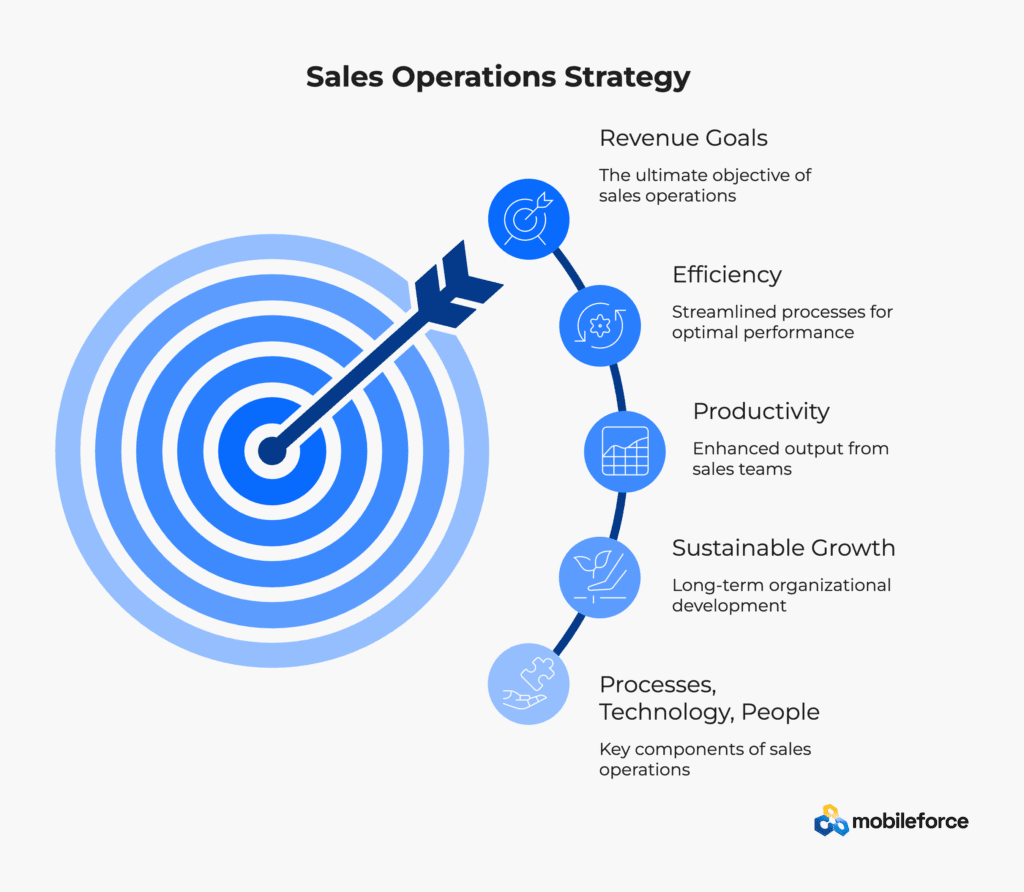
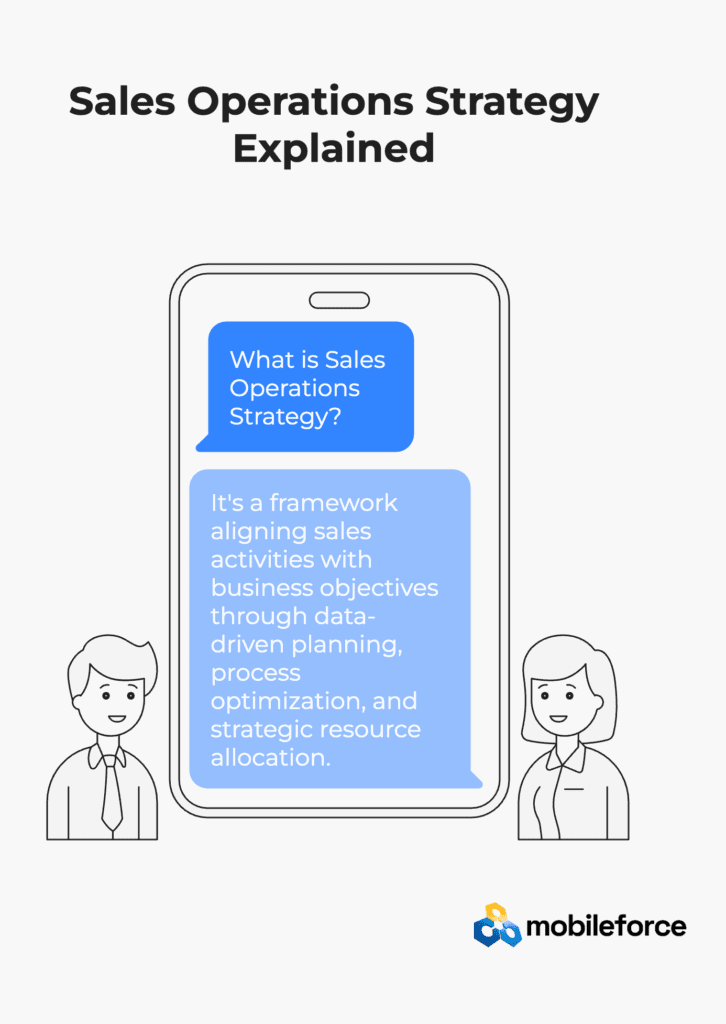
What is Sales Operations Strategy?
Sales Operations Strategy is the comprehensive framework that aligns sales activities with business objectives through data-driven planning, process optimization, and strategic resource allocation. It encompasses the systematic coordination of people, processes, and technology to enable sales teams to perform at their highest potential while driving predictable revenue growth.
At its core, sales operations strategy focuses on four foundational pillars: strategy and planning, technology management, operations oversight, and performance optimization. This holistic approach ensures that sales organizations operate efficiently while maintaining alignment with broader business goals and market demands.
Core Components of Sales Operations Strategy
Strategic Planning and Goal Alignment
Strategic planning forms the foundation of effective sales operations strategy, involving comprehensive analysis of market conditions, competitive landscape, and internal capabilities. Sales operations teams develop territory plans, capacity models, quota structures, and compensation frameworks that align individual performance with organizational revenue targets.
This component includes go-to-market strategy development, sales hierarchy definition, account redistribution, and territory optimization. The planning process ensures that sales resources are deployed strategically to maximize market coverage and revenue potential while maintaining operational efficiency.
Process Design and Optimization
Process optimization focuses on streamlining sales workflows to eliminate bottlenecks and accelerate deal velocity. Sales operations teams analyze the entire customer journey to identify improvement opportunities, standardize best practices, and implement scalable processes that support consistent execution.
This involves mapping sales processes to buyer journeys, defining stage-gate criteria, establishing approval workflows, and creating standardized methodologies. The goal is to simplify complex processes while maintaining necessary controls and ensuring quality outcomes.
Technology Integration and Management
Technology management encompasses the selection, implementation, and optimization of sales technology stacks that enable productivity and provide actionable insights. Sales operations teams evaluate CRM platforms, sales enablement tools, automation solutions, and analytics platforms to create integrated ecosystems that support sales excellence.
Effective technology strategy includes system integration, data governance, user adoption programs, and ongoing optimization. The focus is on creating seamless workflows that eliminate manual tasks and provide sales teams with the tools and information needed to succeed.
Performance Management and Analytics
Performance management involves establishing metrics, monitoring progress, and providing insights that drive continuous improvement. Sales operations teams design dashboards, create reporting frameworks, and implement analytics capabilities that enable data-driven decision making at all organizational levels.
This component includes KPI definition, forecast accuracy improvement, pipeline management, and performance coaching support. The objective is to create transparency, accountability, and actionable insights that drive consistent performance improvement.
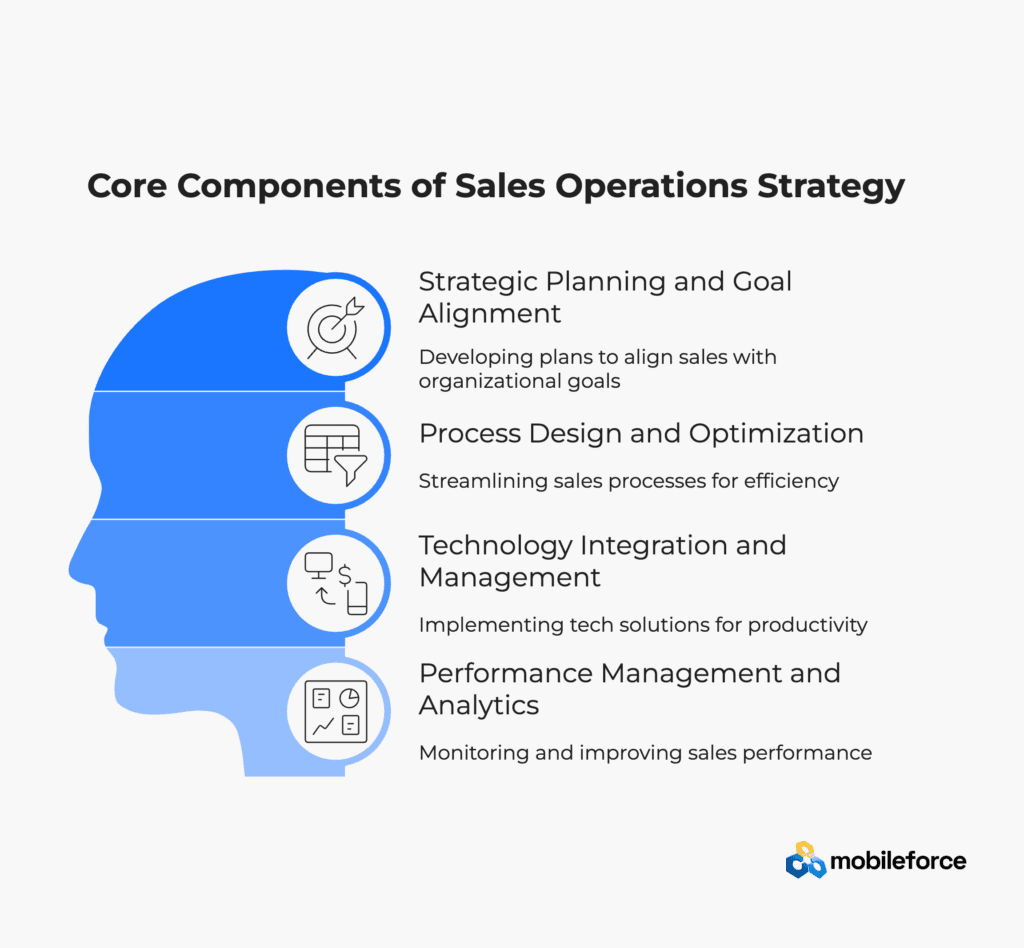
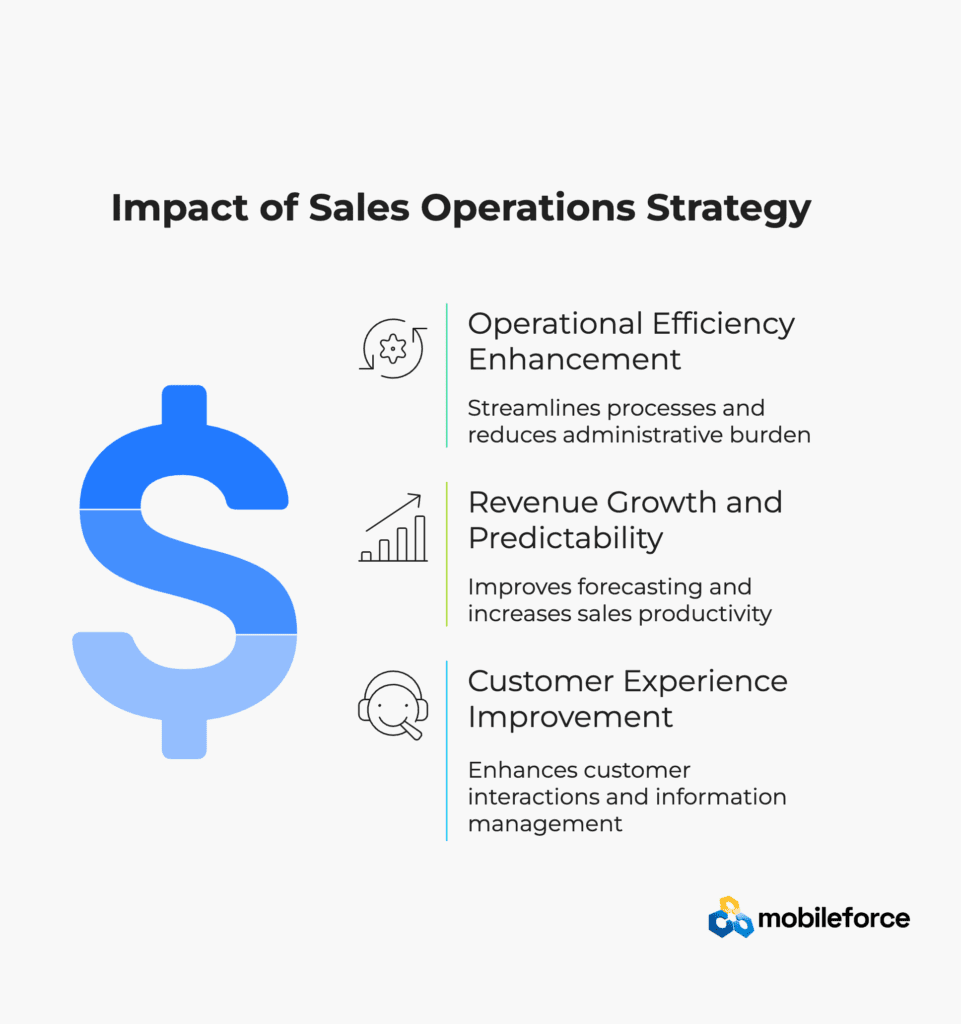
Key Benefits and Business Impact
Operational Efficiency Enhancement
Sales operations strategy drives significant efficiency improvements through process standardization, technology optimization, and resource allocation. Organizations implementing comprehensive sales operations frameworks experience reduced administrative burden, faster deal cycles, and improved resource utilization.
Companies with effective sales operations are 30% more likely to achieve their sales goals compared to those without such strategies. The systematic approach to workflow optimization and technology integration enables sales teams to focus on high-value activities while reducing time spent on administrative tasks.
Revenue Growth and Predictability
Strategic sales operations implementation leads to measurable revenue improvements through better forecasting, pipeline management, and conversion optimization. Organizations experience 15% increases in sales productivity through effective sales operations strategies that align resources with market opportunities.
The data-driven approach to territory planning, quota setting, and compensation design ensures that sales efforts are focused on the highest-value opportunities while maintaining motivation and accountability across the sales organization.
Customer Experience Improvement
Sales operations strategy enhances customer experiences through consistent processes, improved responsiveness, and better information management. Streamlined workflows and integrated systems enable sales teams to provide more personalized and efficient customer interactions throughout the buying journey.
The focus on process optimization and technology integration creates seamless handoffs between sales stages and ensures that customer information is accurate and accessible when needed.
Implementation Framework and Best Practices
Establishing Clear Objectives and Mission
Successful sales operations strategy implementation begins with clearly defined objectives that align with business goals. Organizations must articulate specific outcomes including efficiency improvements, revenue targets, and customer satisfaction metrics that will guide implementation decisions.
The mission statement should provide concrete direction for the sales operations team while establishing accountability measures and success criteria. This foundation ensures that all strategic initiatives contribute to measurable business outcomes.
Building Cross-Functional Collaboration
Effective sales operations require strong collaboration between sales, marketing, customer success, and finance teams. Regular communication, shared metrics, and integrated planning processes ensure that all revenue-generating functions work toward common objectives.
Weekly leadership synchronization meetings and established Service Level Agreements between departments create the framework for sustained collaboration and mutual accountability.
Technology Selection and Integration
Strategic technology implementation involves evaluating tools based on business requirements, integration capabilities, and scalability potential. Organizations should prioritize platforms that support automation, provide actionable insights, and integrate seamlessly with existing systems.
The approach should focus on creating unified data environments that eliminate silos and provide comprehensive visibility into sales performance and customer interactions.
Continuous Improvement Culture
Sales operations strategy requires ongoing optimization through regular performance reviews, process assessments, and technology evaluations. Organizations must establish feedback mechanisms that capture insights from sales teams, customers, and other stakeholders.
The continuous improvement approach includes quarterly strategy reviews, process refinements, and technology optimizations that ensure the sales operations framework remains effective as business needs evolve.
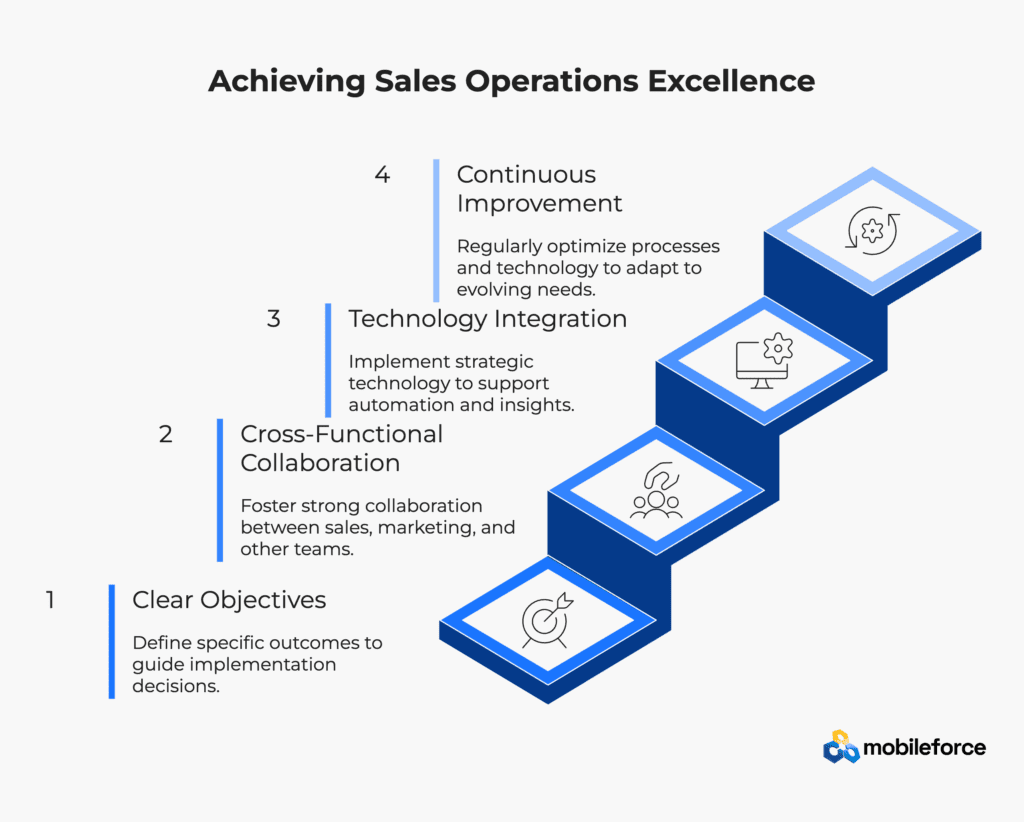
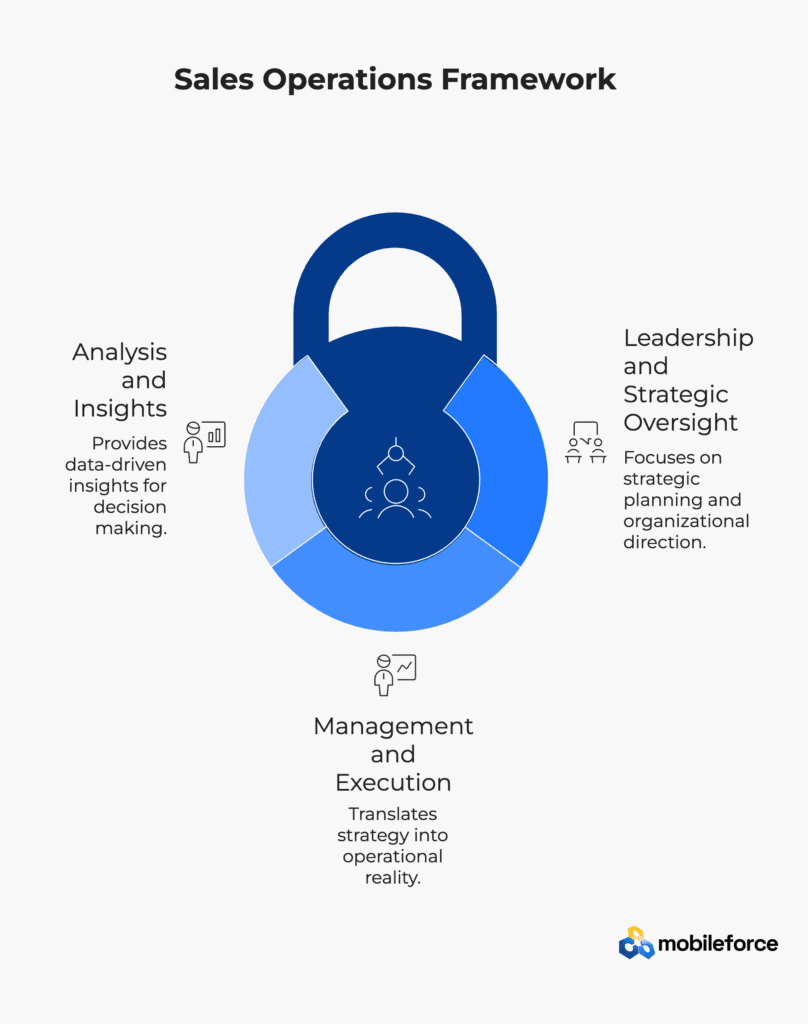
Team Structure and Roles
Leadership and Strategic Oversight
Sales operations leadership typically includes Vice Presidents or Directors who partner with executive teams to develop high-level strategies and set organizational direction. These leaders focus on strategic planning, performance oversight, and cross-functional collaboration that drives revenue growth.
The leadership role involves working with Chief Revenue Officers and other executives to establish vision, allocate resources, and ensure that sales operations initiatives support broader business objectives.
Management and Execution
Sales operations managers translate strategic direction into operational reality through day-to-day process management, tool optimization, and team development. They serve as the bridge between executive strategy and tactical execution, ensuring that sales teams have the support needed to achieve their goals.
Management responsibilities include process implementation, performance monitoring, best practice development, and continuous improvement facilitation.
Analysis and Insights
Sales operations analysts provide the data-driven insights that inform strategic decisions and operational improvements. They work with CRM systems, analytics platforms, and other data sources to create reports, identify trends, and recommend optimization opportunities.
The analytical function is critical for maintaining data quality, generating actionable insights, and supporting evidence-based decision making across the sales organization.
Key Performance Indicators and Metrics
Revenue and Growth Metrics
Primary sales operations KPIs include sales revenue, growth rates, and average deal sizes that measure the overall effectiveness of sales strategies and execution. These metrics provide insight into market performance and competitive positioning.
Organizations should track both absolute revenue figures and growth rates to understand performance trends and identify areas requiring strategic attention.
Efficiency and Productivity Metrics
Sales cycle length, conversion rates, and quota attainment measure the efficiency of sales processes and individual performance. These metrics help identify bottlenecks, optimization opportunities, and training needs.
Win rates, lead-to-opportunity ratios, and average response times provide insights into sales execution effectiveness and customer engagement quality.
Customer-Centric Metrics
Customer acquisition cost, lifetime value, and retention rates measure the long-term effectiveness of sales strategies and customer relationship management. These metrics ensure that sales operations strategies support sustainable business growth.
Customer satisfaction scores and Net Promoter Scores provide feedback on the quality of sales interactions and overall customer experience.
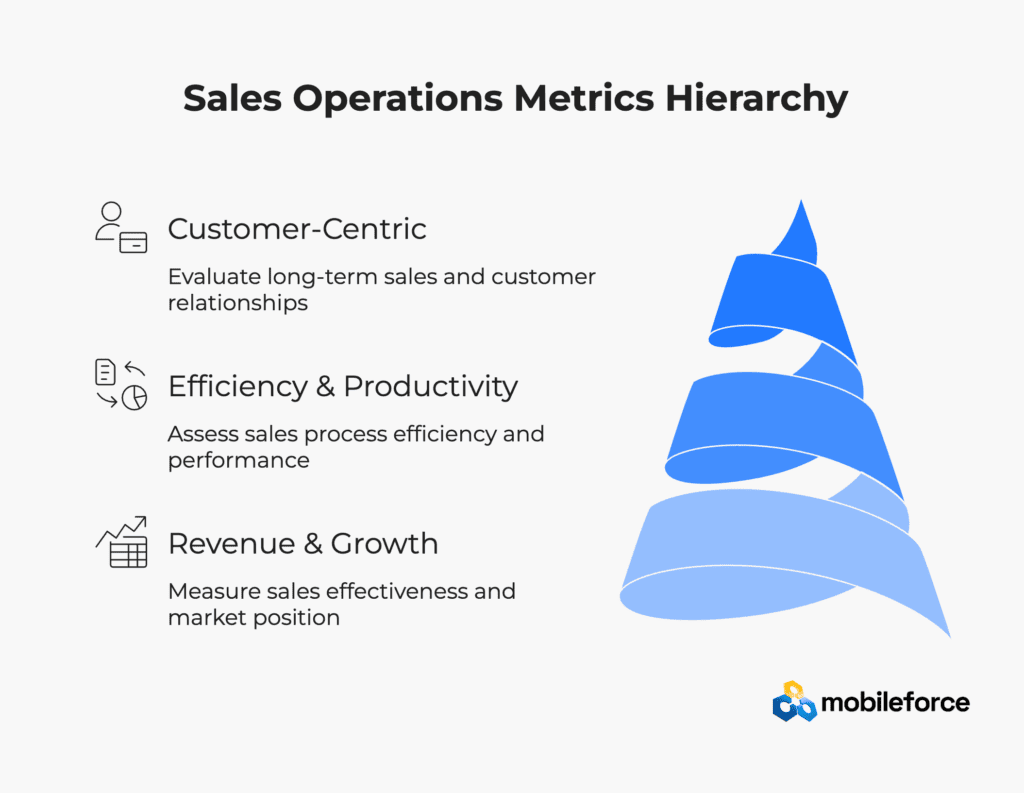
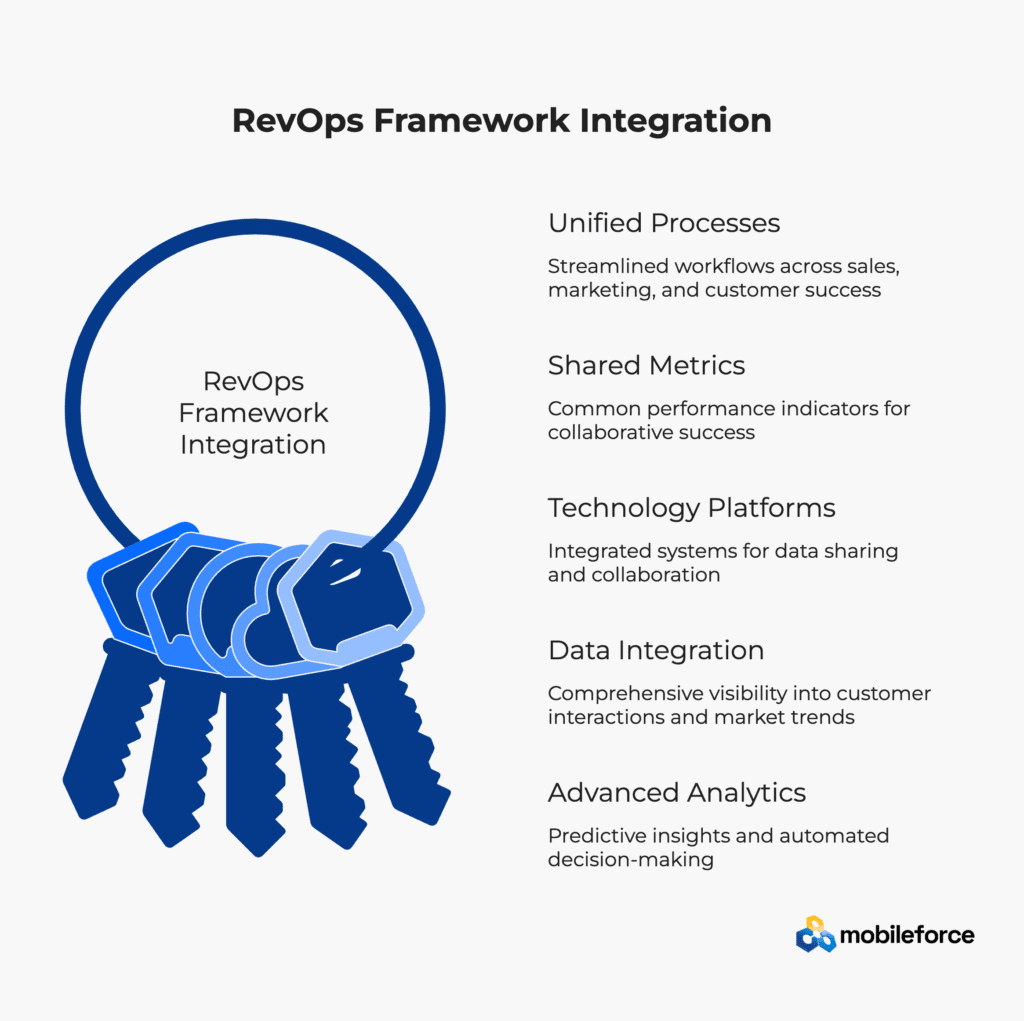
Technology Integration and Revenue Operations Alignment
RevOps Framework Integration
Sales operations strategy increasingly aligns with Revenue Operations (RevOps) frameworks that integrate sales, marketing, and customer success functions. This alignment creates unified processes, shared metrics, and coordinated strategies that optimize the entire revenue cycle.
RevOps integration involves breaking down departmental silos, implementing shared technology platforms, and establishing common performance metrics that drive collaborative success.
Data Integration and Analytics
Modern sales operations strategy relies on integrated data platforms that provide comprehensive visibility into customer interactions, sales performance, and market trends. Advanced analytics capabilities enable predictive insights and automated decision-making that enhance strategic effectiveness.
The focus on data integration ensures that sales operations teams have access to accurate, timely information that supports evidence-based strategy development and execution.
Conclusion
Sales Operations Strategy represents a fundamental shift from reactive support functions to proactive revenue enablement that drives sustainable business growth. Through systematic planning, process optimization, technology integration, and performance management, organizations can create competitive advantages that translate into measurable business results.
The evolution toward integrated revenue operations and data-driven decision-making positions sales operations as a strategic business function that is essential for success in modern competitive markets. Organizations that invest in comprehensive sales operations strategies will be better positioned to achieve consistent revenue growth while maintaining operational efficiency and customer satisfaction.
